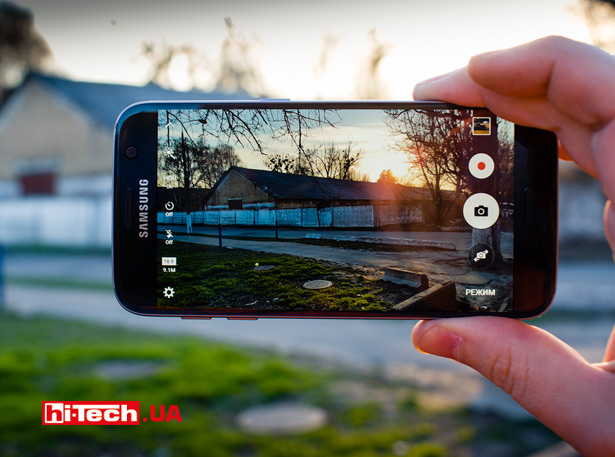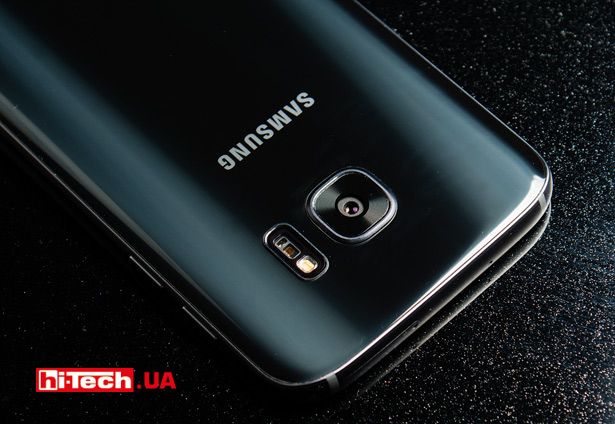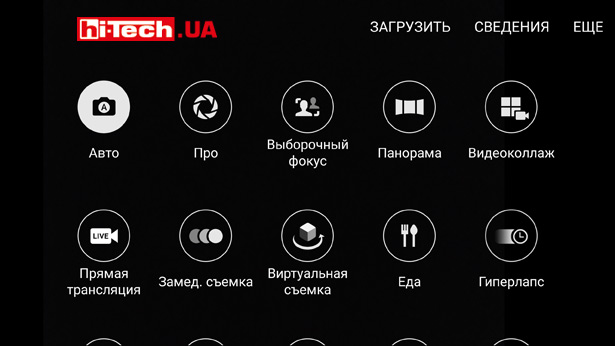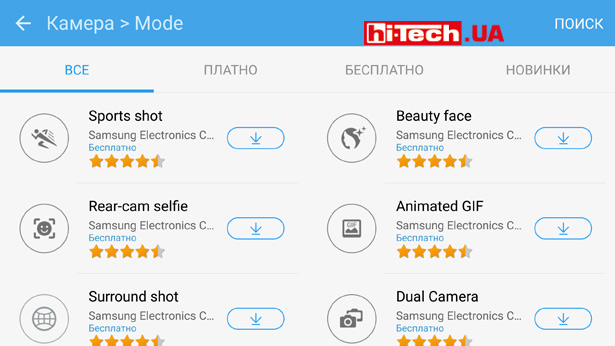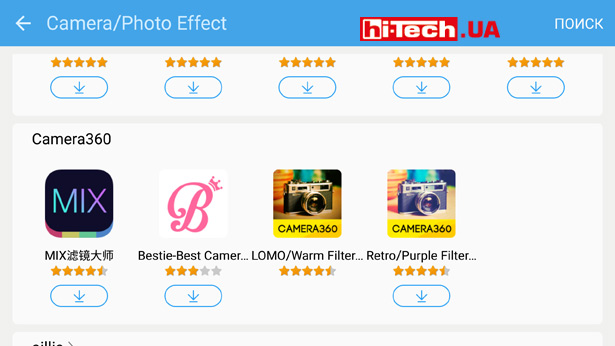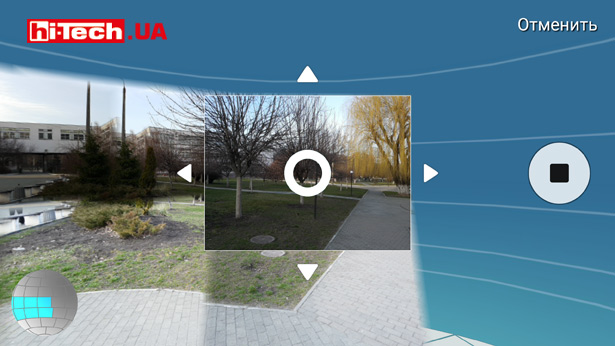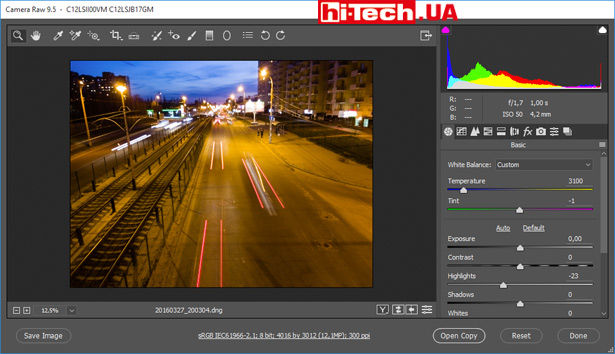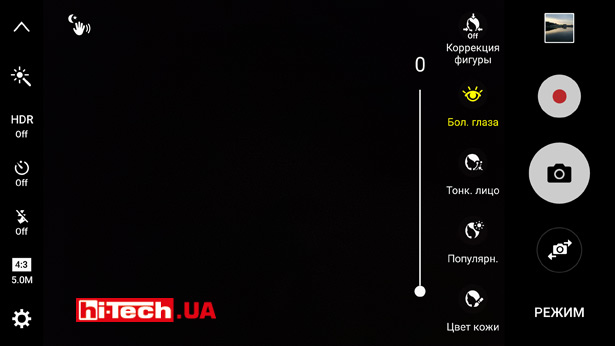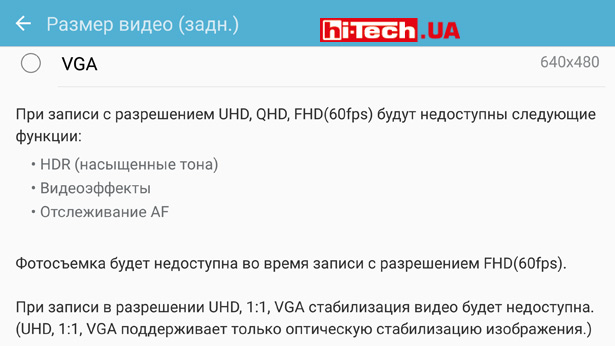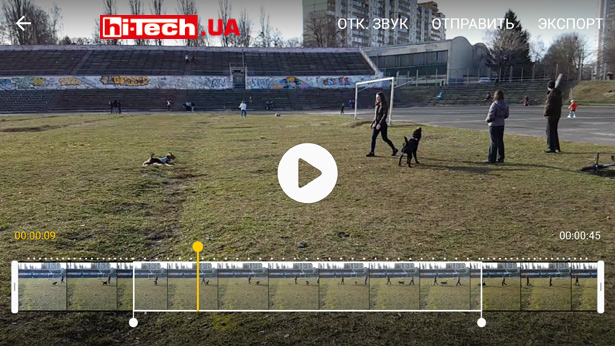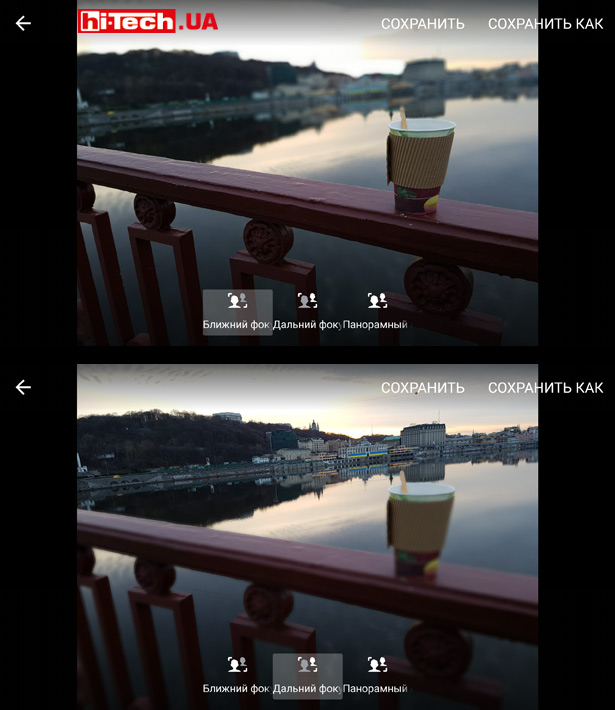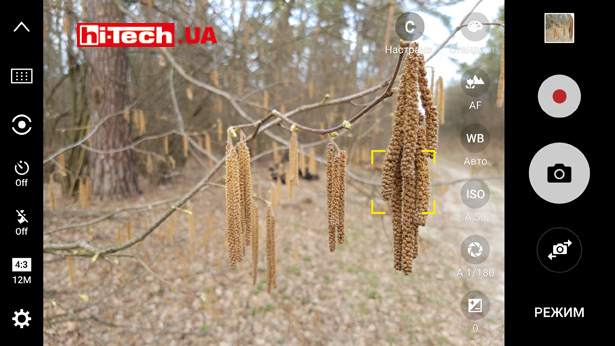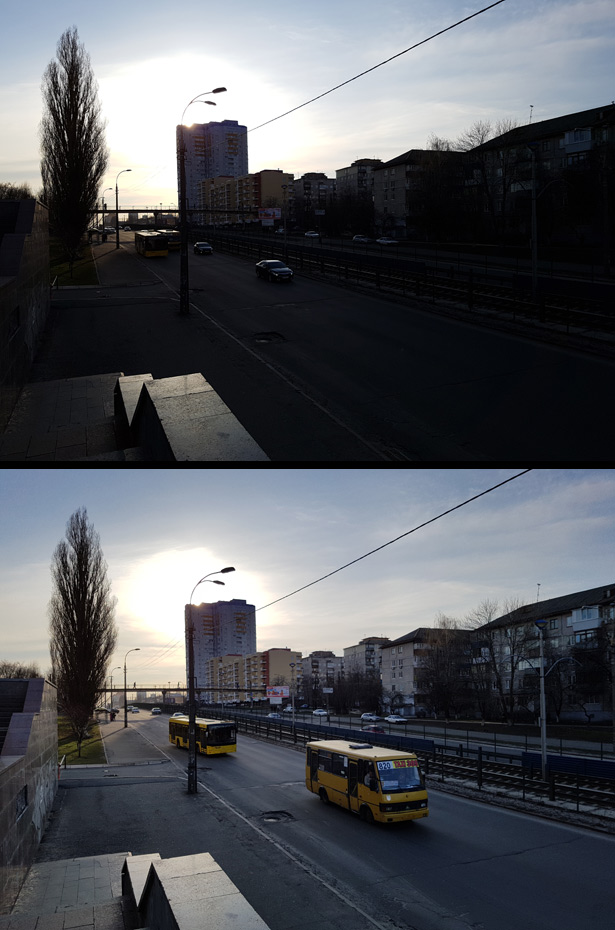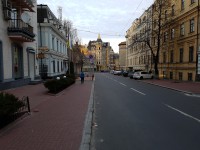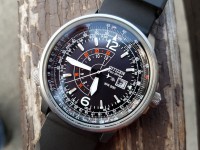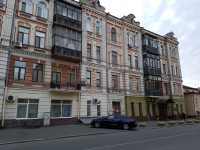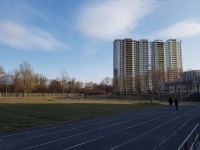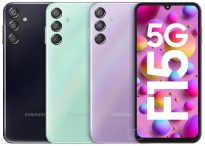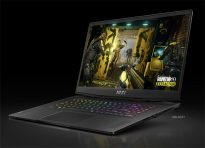What Samsung Galaxy S7 camera able to?
12.04.16
As is the case with the pair Samsung Galaxy S6 and S6 edge, the camera modules of the new flagship smartphones Samsung Galaxy S7 and S7 Edge are identical. I had a Samsung Galaxy S7 at my disposal, so everything said about its camera is also true for the Galaxy S7 edge model.
Hardware
Even before the release of the Samsung Galaxy S7, we went rumorsthat the smartphone may receive a main camera with an enlarged matrix. The specified size was 1/2”. Potentially, this could make the smartphone stand out from its competitors, since flagships currently use smaller matrices.
Why is the size of the light-receiving matrices (sensors) of cameras important? All other things being equal, the larger the matrix, the higher the shooting quality. But using a large matrix in smartphones is not so easy. A larger matrix will require a larger lens. In general, the camera module will be relatively large, and it will be difficult to fit it into an elegant smartphone body. In addition, the cost of such a camera module will be higher.
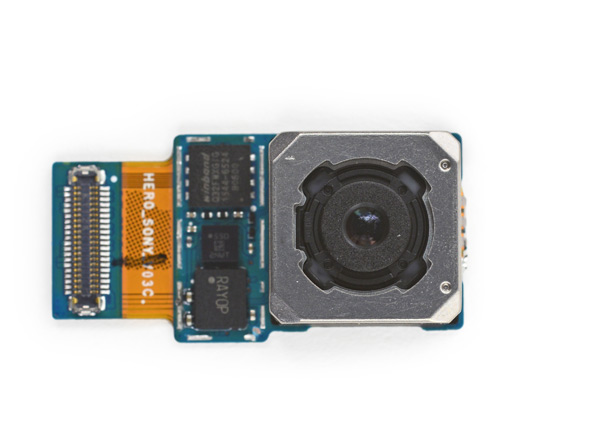
Модуль камеры Sony IMX260 смартфона Samsung Galaxy S7. Фото с сайта ifixit.com
v
As before, the main camera of the Samsung Galaxy S7 is equipped with an optical image stabilization system, which cannot be controlled.
The lens has become slightly wider-angle – the equivalent focal length in the S7 is 26 mm (in the S6 it is 28 mm). The lens aperture has been slightly increased and now has a value of f:1.7. ![]() This allows the matrix to receive more light, which has a positive effect on the quality of shooting.
This allows the matrix to receive more light, which has a positive effect on the quality of shooting.
Among the innovations is the Dual Pixel hybrid autofocus system using phase detection autofocus. Frankly, I previously had no complaints about the autofocus speed of Samsung flagships, but it seems that the new Samsung models have become even better in this regard.
A separate story with the resolution of the main camera matrix. TheGalaxy S7 uses a 12-megapixel sensor. In terms of the number of pixels, the new product is inferior not only to the Galaxy S6 and S5, but even to the Galaxy S4. Let us remember that S4 appeared in 2013.
The manufacturer, for its part, indicated that reducing the number of pixels made it possible to make these pixels larger, which has a positive effect on the amount of light received. The pixel size of the main camera matrix of the Samsung Galaxy S7 is 1.4 μm.
For my part, I note that for the formation of the final image, the size of the matrix is more important, and not the size of the pixels. If we take matrices of the same size, then, other things being equal, the amount of light they receive will be identical, and this does not depend on the number of pixels and the size of each of them.
I remember a similar story with top-end HTC smartphones, where the small number of pixels in flagships was presented as an advantage and this was played up precisely in connection with the large size of these pixels.
But if in the case of HTC the matrix resolution was really low (4 megapixels), which noticeably affected the detail of the pictures, then in this case I would call the number of pixels of the Samsung Galaxy S7 camera absolutely sufficient for such a device. Don’t be confused by the fact that there are fewer pixels than before—if there is a difference in detail, it will be almost unnoticeable.
But there may still be benefit in reducing the number of pixels on the matrix. When shooting video, most cameras and smartphones do not use all pixels to form a picture. Even modern processors are often not enough to process information from all pixels of multi-megapixel matrices, “resize” the video frame to the required resolution, video conversion and forming a stream with several tens of frames per second. Unfortunately, manufacturers almost never indicate which pixel skips are used in which video shooting modes. So, with a decrease in the number of pixels, the processor will need to process less information and it can be assumed that there will be fewer gaps or none at all. This can have a positive effect on the quality of the video image.
Launch the camera
The camera can be quickly launched by double-clicking the center button, even from standby mode. This happens almost instantly. The device will be ready for shooting in a split second, which is very convenient. The function is not new and was previously seen on the Galaxy S6.
Just as the Samsung Galaxy S7 and Galaxy S6 are similar in appearance, so are their shooting modes. A quick glance at the Galaxy S7’s camera mode interface may give the impression that there have been no changes at all compared to the Galaxy S6. ![]() The menu structure, the placement of elements on the screen, the principle of increasing functionality by downloading proprietary extensions – all this transferred to the new model practically without changes.
The menu structure, the placement of elements on the screen, the principle of increasing functionality by downloading proprietary extensions – all this transferred to the new model practically without changes.
Brand continuity is, of course, good, but, in my opinion, some visual rearrangements and innovations would not hurt.
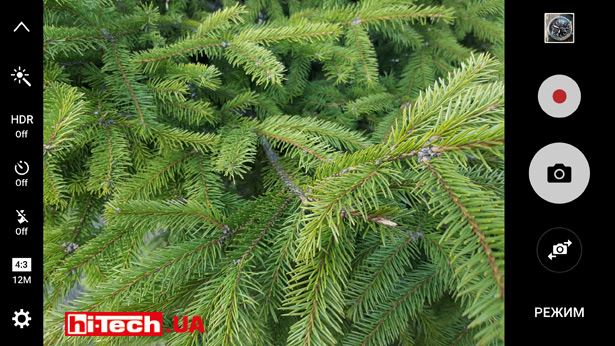
The Galaxy S7 camera sensor has an aspect ratio of 4:3 (a typical aspect ratio for smartphone camera sensors). Accordingly, when choosing full resolution, the image on the smartphone screen with a 16:9 ratio will be “cropped” on the sides. To display the picture in full screen, you must select the appropriate photography mode (16:9), and the photo resolution will be a maximum of 9 megapixels. A mismatch between the aspect ratio of the matrix and the screen is a common situation in smartphones. It’s strange that this point sometimes raises questions among users
The functionality, as befits a flagship, is very good. ![]()
![]() There is powerful burst shooting, HDR for photos and videos, panorama, a mode that allows you to select the focus on the foreground or background after shooting, etc.
There is powerful burst shooting, HDR for photos and videos, panorama, a mode that allows you to select the focus on the foreground or background after shooting, etc.
As stated, the functionality can be further increased with new extensions that are downloaded from the Samsung branded market (a Samsung account is required). For example, through extensions you can create spherical panoramas. The function was once available in the S5, but it was not available in the S6 (perhaps this extension is now available for the Galaxy S6).
The manual shooting mode deserves special attention. At first glance, everything here is the same as in the Galaxy S6 (control of sensitivity, shutter speed, metering mode, exposure compensation, manual autofocus, etc.), but there are small but very important innovations.
Firstly, in manual mode, information about the sensitivity value and shutter speed is displayed on the screen. Let us remind you that the aperture in smartphones does not change and the value corresponds to the lens aperture value.
For those who understand shooting parameters, such a banal feature, which, by the way, is available even in the simplest cameras, can be of great help when shooting.
Secondly, support for photography in RAW format has been added. I think it’s not worth pointing out the advantages of shooting in this format once again.
When using the front camera, a number of effects are available aimed at improving complexion, removing skin blemishes, changing the figure, etc. It is logical, given that such cameras are most often used for selfies (self-portraits). There is no flash for the front camera.
Samsung Galaxy S7 has very advanced video shooting capabilities. 4K video, 1080p60 mode, slow motion – it’s all there, as befits a modern high-end smartphone. In addition to optical stabilization, electronic stabilization can also be activated. In this case, the viewing angle will be reduced (part of the matrix is used for stabilization).
In some modes, not all functions and effects will be available. The smartphone warns about this in the settings menu.
Please note that in slow motion mode, the Samsung Galaxy S7 shoots at 240 fps. (previously 120 fps), however, the quality noticeably suffers. But in general, the mode provides excellent opportunities for experimentation and has a convenient built-in editor, with which you can conveniently select which moment in the video you want to slow down.
What’s missing?
With all the richness of shooting capabilities and modes, the Samsung Galaxy S7 could use some functions that we have seen in various smartphones before.
For example, in the Galaxy S5 model, Using continuous shooting, it was possible to “cut” a moving object out of the frame or “spread” a moving object across the entire frame.
Autofocus bracketing has been seen in smartphones during macro photography with the “assembly” of the final image with a large depth of field (DOF). There is no such possibility here.
Some more exotic functions are also missing. For example, in Sony smartphones there is the possibility of composing a frame when shooting simultaneously with several devices (smartphones, cameras).
How does it shoot?
Of course, we would like to directly compare the Samsung Galaxy S7 and Galaxy S6, but we did not have such an opportunity.
I was very pleased with the shooting quality of the Samsung Galaxy S7. Subjectively, he shoots very well. The progress of smartphone cameras is impossible not to notice. This applies to both photos and videos.
For posting pictures and videos on social networks, even working in the most difficult conditions at the limit of sensitivity turns out to be quite satisfactory.
I’ll share some observations while working with the Samsung Galaxy S7.
Don’t rely heavily on selective focus mode. The camera often applies the effect very incorrectly (see screenshots).
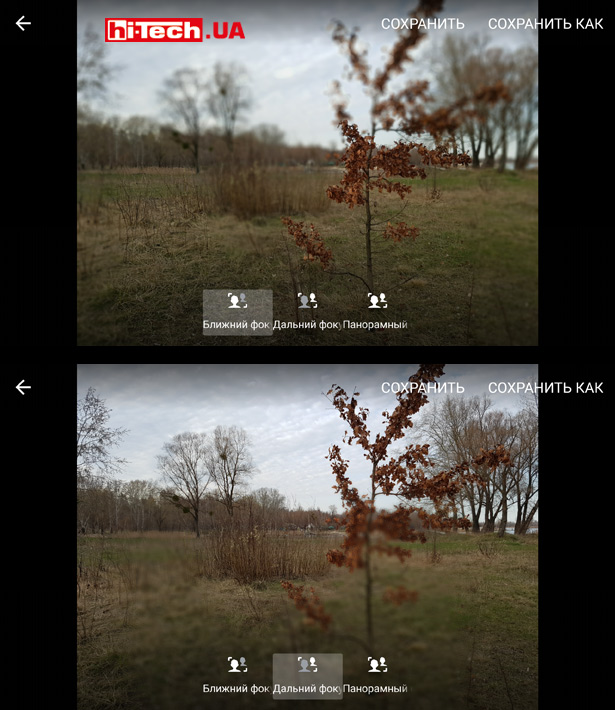
And in this case, the processing occurred with noticeable “artifacts”. Inaccurate operation of this mode can be observed quite often
You can do without this mode. Due to the high aperture ratio of the lens in combination with a relatively large matrix, during large-scale shooting the depth of field turns out to be quite small, and you can achieve natural, rather than software, background blur (see below).
I didn’t really like the performance of the Samsung Galaxy S7 in macro photography. The minimum shooting distance turned out to be quite large, which, combined with the use of a wide-angle lens, does not give the best zoom. The results turned out to be, let’s say, quite good, but I expected more.
But I would call the ability to select a focus object and track this object in the frame very useful. True, the function does not work in “heavy” video shooting modes.
HDR is used very correctly. I specially selected an example where the effect of turning on HDR noticeably transformed the picture.
Autofocus is really very fast and works well in low light. Refocusing from one object to another, from near to far when shooting video is very fast. This may be the best autofocus performance we’ve seen on a smartphone. But there is a small nuance. In 1080p60 video recording mode (only in this mode), autofocus speed for some reason noticeably decreased. Perhaps this is some kind of software defect and it will be fixed in new firmware.
If there is insufficient lighting, the camera will warn the user with a special icon. In this case, the shutter speed can be set quite long – up to 1/5 s. For handheld shooting, even taking into account the stabilization system, this is a bit much. There is a possibility of grease occurring. However, such shots are taken at high sensitivity values and the requirements for their quality are not so strict.
Conclusions
We fully expected the excellent results from the Samsung Galaxy S7 camera. Shooting quality is a traditional strength of top-end Samsung smartphones, and with this model you can verify this once again.
The camera’s capabilities and the range of functions associated with it are very rich. In my opinion, an important addition to this generation of Samsung flagship smartphones is a more advanced mode with manual settings and the ability to shoot RAW.
Perhaps the manufacturer should have slightly changed the shooting mode interface – it is too similar to the interface found on previous generation Samsung smartphones.
Once again, I will note the key camera changes of the Samsung Galaxy S7 compared to the Galaxy S6:
- new 12-megapixel matrix;
- increased lens aperture;
- advanced Dual Pixel autofocus system using phase sensors;
- more functional shooting mode with manual settings;
- shooting in RAW format;
- more advanced slow motion mode.
Gallery
Read also:
A few words about the Samsung Galaxy S6 camera
How does the LG G4 take pictures? We look at the camera mode in the new flagship
Comparison of HTC One (M8) and Samsung Galaxy S5 cameras
Camera test. LG G3 vs Samsung Galaxy S5
Engineer of the Test Laboratory
Don't miss interesting news
Subscribe to our channels and read announcements of high-tech news, tes
Logitech M196 mouse review: small and long
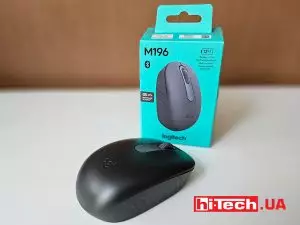
The Logitech M196 mouse is designed for work, affordable, convenient in size, wireless, and lasts all year on a battery. What else is needed?
Vodafone has expanded available roaming for Ukrainians to all EU countries
VodafoneVodafone Ukraine has expanded the possibilities of using mobile communication services, allowing its subscribers to use home tariffs in 28 countries of the European Union
Nvidia will release its ARM processors for PCs in September 2025
Nvidia processorNvidia plans to release its ARM processors for PCs in September 2025, which will compete with Qualcomm’s Snapdragon X line

